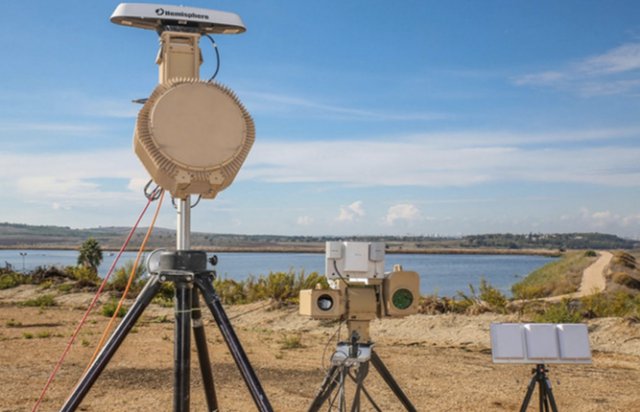The United Kingdom has procured the Israeli-developed Drone Dome counter-unmanned aircraft system (C-UAS), manufacturer Rafael confirmed to Jane’s on 13 August.
The selection of the Drone Dome comes eight months after it was demonstrated to the UK government in January. According to Rafael, the United Kingdom is to receive the radar detection, electro-optical (EO) identification and communication jamming elements of the system, but not the hard-kill laser.
No details pertaining to delivery timelines or contract values were disclosed.
The Drone Dome is described by Rafael as an “end-to-end system designed to provide effective airspace defence against hostile drones used by terrorists to perform aerial attacks, collect intelligence, and other intimidating activities”.
Detection is provided by a combination of a RADA Innovative Defense Electronics RPS-42 pMHR S-band multimission 90° hemispheric radar (four radars to give full 360° coverage), the Controp MEOS electro-optical/infrared (EO/IR) surveillance suite, and the NetSense Wideband detection sensor developed by Netline; command-and-control is provided by a command console; and the effector can be the Lite Beam laser, the C-Guard RD jammer, or even a high-pressured water gun depending on the threat.
As noted by RADA, the RPS-42 has three operating modes: track while search, target revisit, and single target tracking. The radar usually has a detection range of about 50 km for a target the size of a transport aircraft, but for the class of target that it is looking for in its Drone Dome application the radar would typically provide a detection range of between 3.5 km and 10 km. As well as providing detection, the RPS-42 also offers the option for a ‘soft-kill’ of the unmanned aerial vehicle (UAV) when integrated with the RF jammer. The system uses a gallium nitride solid-state active electronically scanned array antenna, and being relatively small and light is suitable for static and vehicle-based applications.
Source: Jane’s 360

